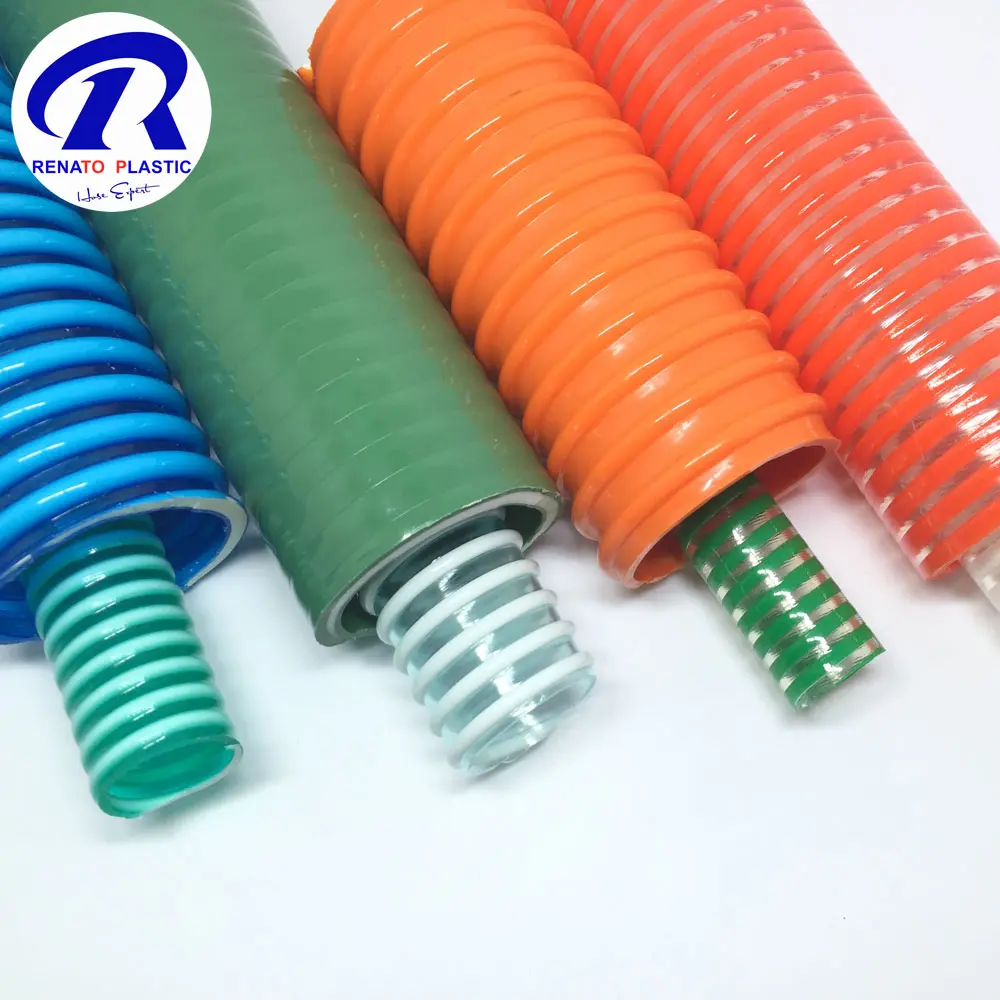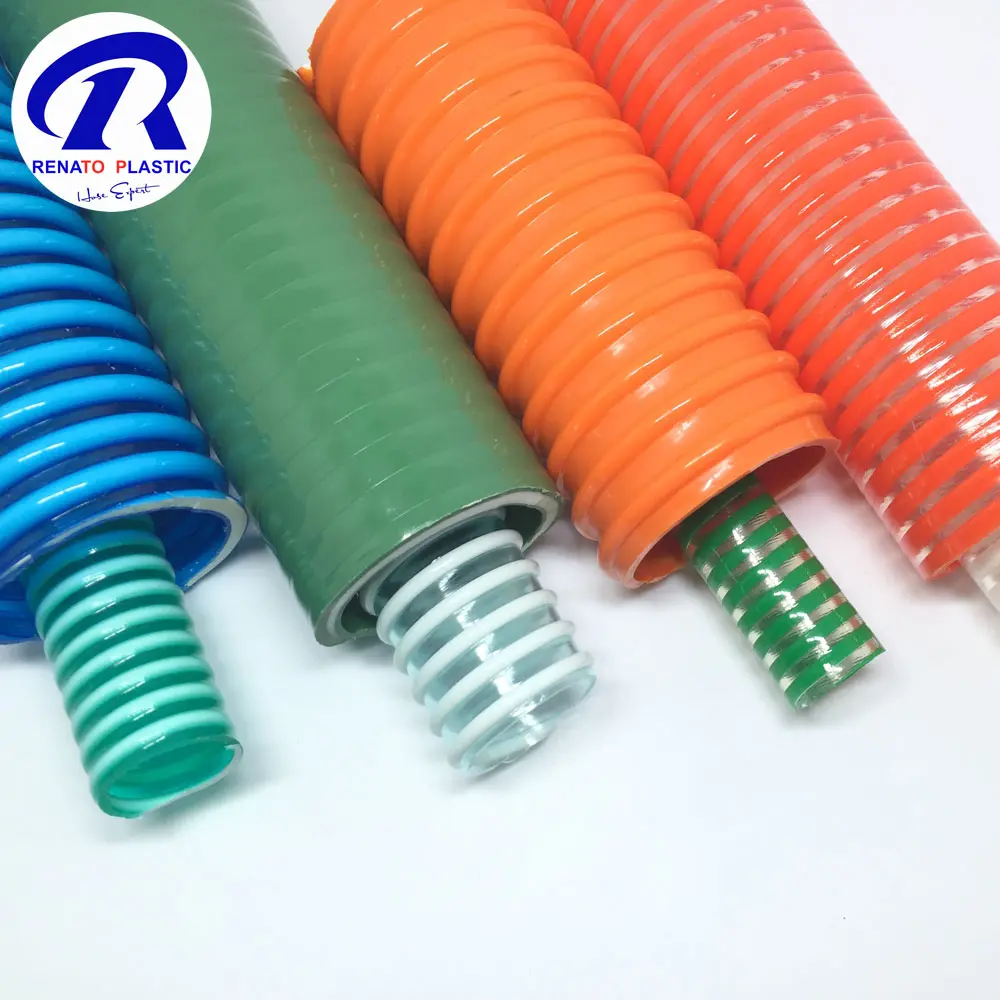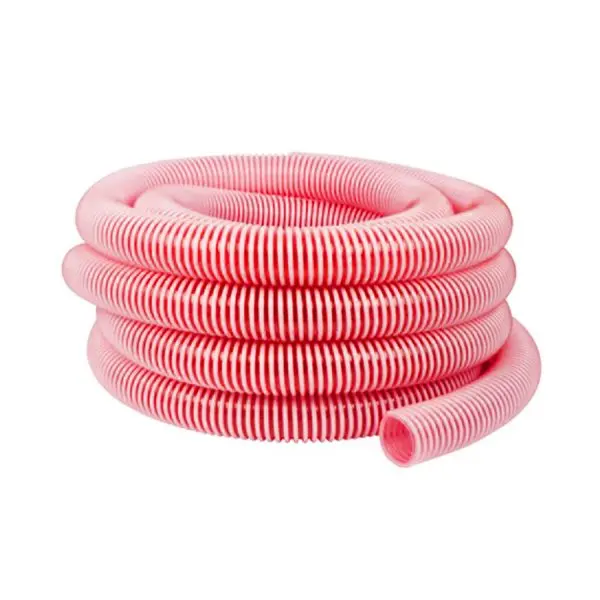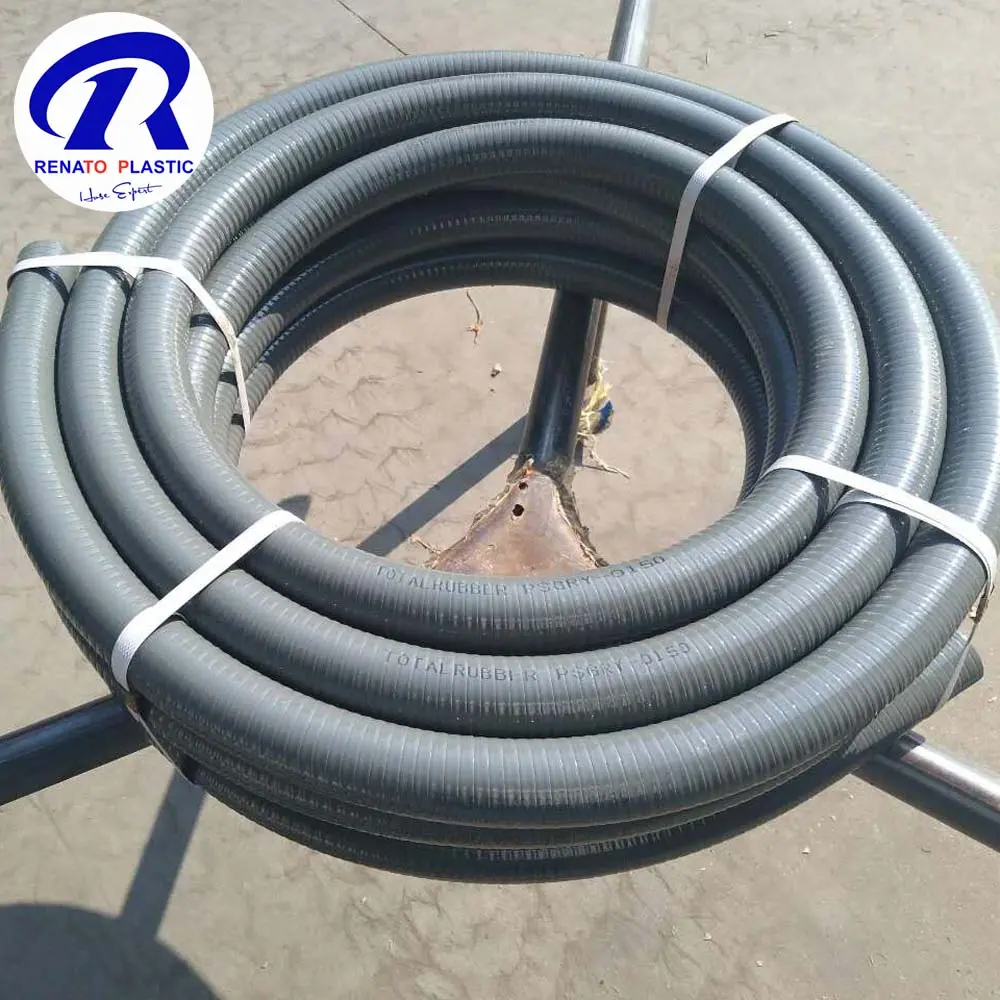Suction Hose VS Discharge Hose
Suction hose: Primarily used to draw liquid or gas from one place to another. It is often used with pumps or other suction equipment to create negative pressure and draw in the material. Discharge hose: Mainly designed to discharge liquid or gas from a container or equipment. It ensures smooth outflow of the liquid or gas.

What is suction hose pipe?
Suction hose pipe is a type of flexible tubing designed for use in applications that require the suction or transfer of liquids, gases, or other fluids. It is typically made of durable and flexible materials that can withstand the rigors of various environments and applications.
Suction hose pipe is often used in agricultural, industrial, and construction settings. In agriculture, for example, it can be used for irrigation systems to deliver water to crops efficiently. In industrial applications, it may be used for transferring chemicals, fuels, or other liquids within a factory or manufacturing facility. In construction, suction hose pipe can be utilized for pumping water or other fluids during various stages of a building project.
The flexibility of suction hose pipe allows it to conform to different shapes and sizes, making it suitable for use in a wide range of scenarios. It can also be easily connected to pumps, valves, and other equipment to create a complete fluid transfer system. Additionally, suction hose pipe is often designed to be lightweight and easy to handle, which makes it convenient for use in field or on-site applications.

This is the appearance of suction hose, which is smooth and textured. The outer layer material is wear-resistant and non-slip, and can bend and adapt to various shapes and angles.
Helix Sprial Pvc Suction Hose For Water Suction And Discharge
At Renato Hose, we pride ourselves on delivering top-tier products crafted with precision and expertise honed over 15 years in the industry. Our Helix Spiral PVC Suction Hose stands as a testament to our commitment to quality and innovation.
Crafted with high-quality PVC reinforcement, our suction hose boasts a robust construction capable of withstanding up to -2 bar vacuum pressure, ensuring reliability even in demanding environments. Its long working life guarantees durability, providing you with a dependable solution for your water suction and discharge requirements.

Bright color and good flexibility, suitable for all kinds of spaces.
Applications
This hose is widely used for industry in both positive and negative pressure applications, ideally for conveying and suction of water, oil, powder, granules in pump industries, constructions, mining industries, chemical factories and many other industry applications.

This is a picture of suction hose after simple packaging.
Characteristics
This hose is made from high quality flexible PVC material and high strengthen PVC bones. Excellent flexibility, light weight, crush and abrasion resistant, smooth tube for less friction loss, smooth cover allows easy dragging, weathering resistant, clear to have full visual flow of materials, corrosion resistant to light chemicals, various lengths available and can be supplied with different couplings and clamps, ideal replace for bulkier and heavier ply-wrapped rubber hose.
◢ This kind of hose is an ideal products to use for suction and discharge.
◢ It is cystal clear, flexible, bright colors, very easy to know what's going on inside the hose.
◢ No odor, environmental protection products.
◢ Working Temperature: -5°C-65°C
| Inner Diameter | Thickness | Length/Roll | Weight | Working Pressure (23℃) | ||
| inch | mm | mm | m | kg/m | bar | psi |
| 3/4 | 19 | 2.5 | 50 | 0.25 | 8 | 120 |
| 3 | 50 | 0.28 | 9 | 135 | ||
| 1 | 25 | 2.5 | 50 | 0.32 | 8 | 120 |
| 3 | 50 | 0.35 | 9 | 135 | ||
| 1 1/4 | 32 | 3 | 50 | 0.4 | 8 | 120 |
| 4 | 50 | 0.55 | 9 | 135 | ||
| 1 1/2 | 38 | 3 | 50 | 0.55 | 6 | 90 |
| 4 | 50 | 0.7 | 7 | 105 | ||
| 2 | 50 | 4 | 50 | 0.92 | 6 | 90 |
| 5 | 50 | 1.1 | 7 | 105 | ||
| 2 1/2 | 63 | 3.5 | 30 | 0.95 | 5 | 75 |
| 4.5 | 30 | 1.23 | 6 | 90 | ||
| 3 | 75 | 4 | 30 | 1.45 | 4 | 60 |
| 5 | 30 | 1.65 | 5 | 75 | ||
| 4 | 100 | 5 | 30 | 2.3 | 4 | 60 |
| 6 | 30 | 2.9 | 5 | 75 | ||
| 5 | 127 | 6 | 20 | 3.3 | 4 | 60 |
| 8 | 20 | 4.7 | 5 | 75 | ||
| 6 | 152 | 7 | 20 | 5 | 4 | 60 |
| 9 | 20 | 6.3 | 5 | 75 | ||
| 8 | 200 | 7 | 10 | 6.3 | 4 | 60 |
| 8 | 10 | 7 | 4 | 60 | ||
| 10 | 250 | 8 | 10 | 10 | 4 | 60 |
| 9 | 10 | 11 | 4 | 60 | ||
| 12 | 305 | 12 | 10 | 18 | 4 | 60 |
| 14 | 355 | 12 | 10 | 20 | 4 | 60 |
Differences Between Suction Hose and Discharge Hose
Suction hoses and discharge hoses are commonly used in water pumping applications, but they have distinct functions and are constructed differently to serve their respective purposes. Below is a detailed comparison of the two, along with a specification table to highlight the differences.
1. Functionality:
Suction Hose:
Purpose: A suction hose is used to draw water or other liquids from a source, such as a tank, pond, or well, into the pump. These hoses are reinforced to prevent collapse under the negative pressure or vacuum created during suction.
Application: Suction hoses are designed for low-pressure applications but must be robust enough to handle external pressures, preventing the hose from collapsing.
Discharge Hose:
Purpose: A discharge hose is used to transport the liquid from the pump and release it to another location (e.g., a field, drain, or storage tank). These hoses are typically used to transport water after it has been pumped.
Application: Discharge hoses handle positive pressure and do not need the same level of reinforcement as suction hoses because they are not subjected to vacuum conditions.
2. Construction:
Suction Hose:
Constructed with rigid PVC helix or spiral reinforcement to resist external pressure and collapse.
Flexible enough to maneuver but typically heavier due to thicker walls and the reinforcement structure.
Requires a smooth interior for easy fluid flow and an exterior capable of resisting collapse under suction.
Discharge Hose:
Typically made from lightweight, flexible materials such as PVC or rubber.
The hose is designed to withstand internal pressure from the water being pumped, but it does not need to handle vacuum conditions, making it less rigid and lighter than suction hoses.
Some discharge hoses, especially lay-flat types, are designed to collapse when not in use for easy storage.
3. Pressure Rating:
Suction Hose:
Lower working pressure but must be able to handle the vacuum created by suction.
Typically ranges between 4 to 6 Bar working pressure.
Discharge Hose:
Higher working pressure since it needs to withstand the pump’s output.
Pressure ratings can range from 6 to 12 Bar depending on the pump and application.
4. Material:
Suction Hose:
Usually made of PVC, rubber, or a combination of these, reinforced with a rigid helix to maintain structural integrity under suction.
Discharge Hose:
Made from flexible materials like PVC, rubber, or lay-flat designs, with little or no reinforcement since the internal pressure from pumping does not require resistance to vacuum.
Specification Table Comparison
| Feature | Suction Hose | Discharge Hose |
|---|---|---|
| Primary Use | Drawing liquid from a source into the pump | Discharging liquid from the pump to another location |
| Construction | Reinforced with PVC helix or spiral structure to prevent collapse under vacuum | Lighter, non-reinforced or lay-flat design for positive pressure |
| Material | Thick PVC, rubber, reinforced with rigid helix | Flexible PVC, rubber, or lay-flat design |
| Pressure Handling | Low pressure (handles vacuum pressure) | Higher pressure (positive pressure only) |
| Typical Pressure Rating | 4-6 Bar | 6-12 Bar |
| Weight | Heavier due to reinforcement | Lighter, easier to handle |
| Flexibility | Less flexible due to reinforcement | Highly flexible, especially in lay-flat designs |
| Storage | Requires more space due to rigid construction | Lay-flat hoses collapse for compact storage |
| Common Sizes | 1 inch, 1.5 inch, 2 inch, 3 inch, 4 inch | 1 inch, 1.5 inch, 2 inch, 3 inch, 4 inch, 6 inch |
Key Considerations:
Purpose: Always use a suction hose for pulling liquids into the pump and a discharge hose for pumping liquids away from the system.
Pressure Requirements: Choose a discharge hose with a pressure rating that matches the pump’s output to avoid bursting.
Storage: For applications where storage space is limited, lay-flat discharge hoses are ideal since they collapse when not in use.
This table shows the difference between suction and discharge hose. When you choose and use suction and discharge hose, you can make the clearest choice.
Conclusion
Both suction and discharge hoses are critical in water pumping systems, but they serve different roles. Suction hoses are built to withstand vacuum pressure and resist collapse, while discharge hoses handle the positive pressure generated by the pump. Properly choosing the right hose for the right task is essential to ensure the efficiency and safety of your water pumping operations.


